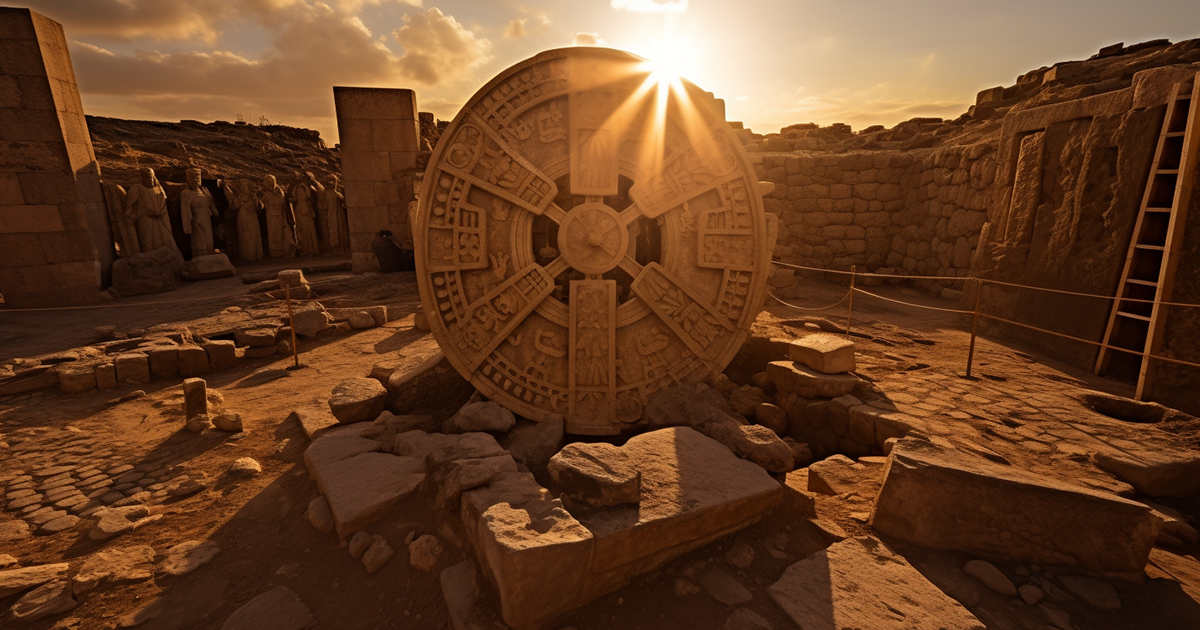Deep within the expansive lands of Southeastern Turkey, concealed beneath layers of sand, rests a remarkable find that has set the field of archaeology abuzz. Unveiled by diligent excavators, Gobekli Tepe, the world’s most ancient temple complex, emerges as a link to our distant past, challenging conventional notions about early human civilization.
Carbon dating places Gobekli Tepe’s roots back to the 10th Century BC, a remarkable 6,000 years ahead of the emergence of language and the dawn of primitive societies. This revelation holds the potential to revolutionize our comprehension of early human accomplishments.
Traditionally, the prevailing image of hunter-gatherers depicts them as small, wandering bands, reliant on foraging and life in caves. Gobekli Tepe paints a contrasting picture, showcasing the capacity of these ancient communities to band together in large groups under a central authority, collaborating on grand undertakings involving the transportation and sculpting of enormous stone pillars on an unprecedented scale.
What lends Gobekli Tepe its allure is its cryptic purpose. It stands apart from being a settlement or village, devoid of any domestic remnants. The speculation is rife, with the prevalent belief leaning towards a ritualistic importance. Yet, the precise nature of these ceremonies remains shrouded in mystery.

The distinguishing feature of Gobekli Tepe lies in its antiquity. Radiocarbon dating hints at a possible age of 12,000 years, preceding established human civilizations by a staggering 5,000 years. This raises a fundamental question: how did ancient people, potentially still in their hunter-gatherer phase, accomplish such an extraordinary construction?
The site is adorned with intricate carvings portraying an array of animals, including species not indigenous to the area. Could these carvings serve as symbolic representations of creatures from a bygone era or even allude to Noah’s Ark from biblical lore? The enigmas continue to pile up.
The most perplexing elements of the site are the colossal monolithic pillars. These anthropomorphic pillars, characterized by slender arms and symbolic belts, have become objects of fascination, potentially depicting gods, ancestors, or revered individuals, yet their true significance remains elusive.
Fascinatingly, the builders of Gobekli Tepe utilized the site for astronomical observations over a span of about 1500 years. Some conjecture a linkage to the Signis constellation, a recurring motif in the mythologies of various ancient cultures.
The concept of ancient space travelers from distant galaxies is not novel, and Gobekli Tepe’s alignment with a specific constellation prompts intriguing questions about the origins of its creators. Could they have aimed to communicate a message to future generations, hinting at their celestial heritage?
In recent times, even contemporary science has turned its attention to the Signis constellation, noting peculiar dimming and fluctuations observed in one of its stars. Certain scientists propose that these anomalies may be attributed to an extraterrestrial megastructure. Is there a connection between these celestial enigmas and the ancient enigmas of Gobekli Tepe?
While pondering the purpose and importance of Gobekli Tepe, one fact emerges unequivocally: this ancient site directs us back to our roots and to the cosmos. It challenges our presumptions about the capacities of early humans and prompts us to delve into the prospect of extraterrestrial ties to our past.
In conclusion, Gobekli Tepe stands as an inscrutable testament to human creativity and the riddles that linger beneath the sands of time, awaiting discovery by inquisitive minds.
